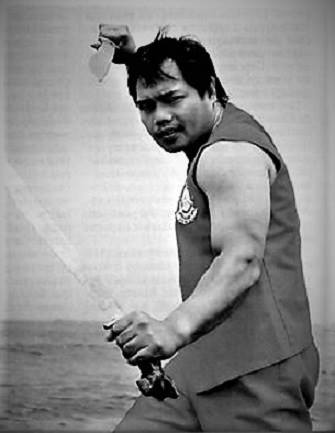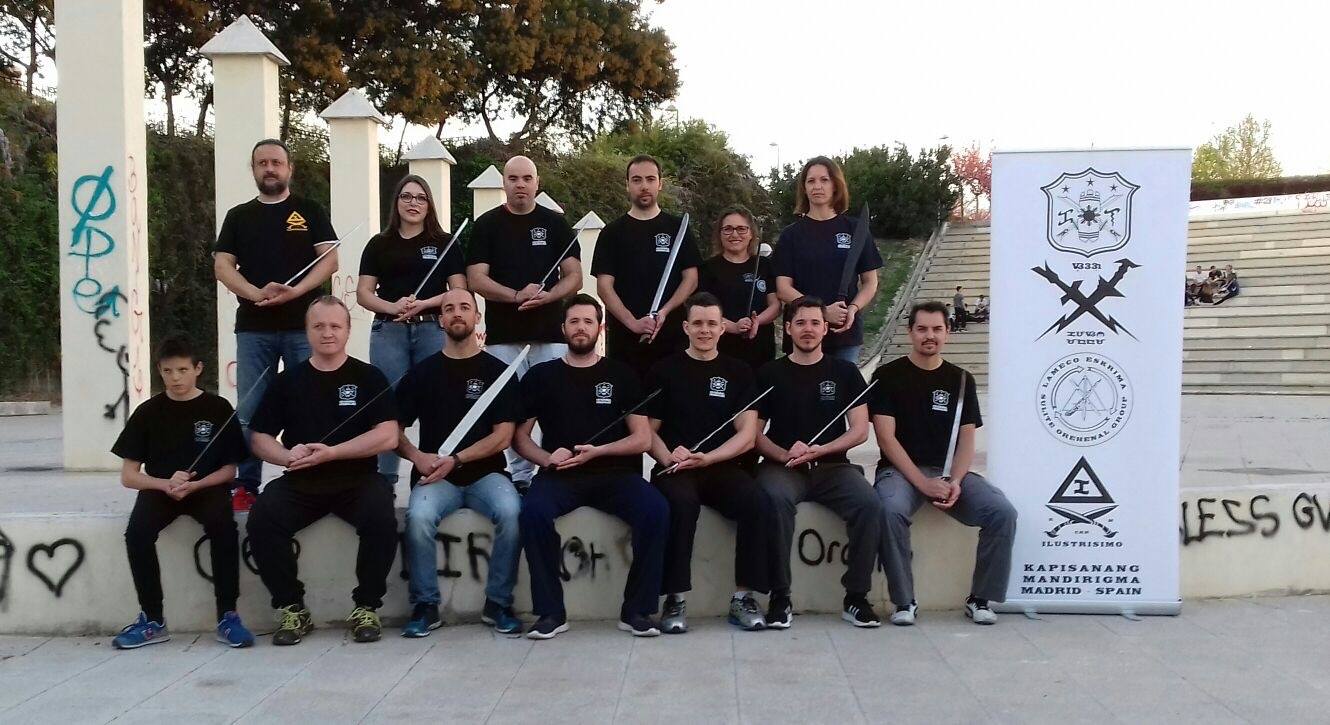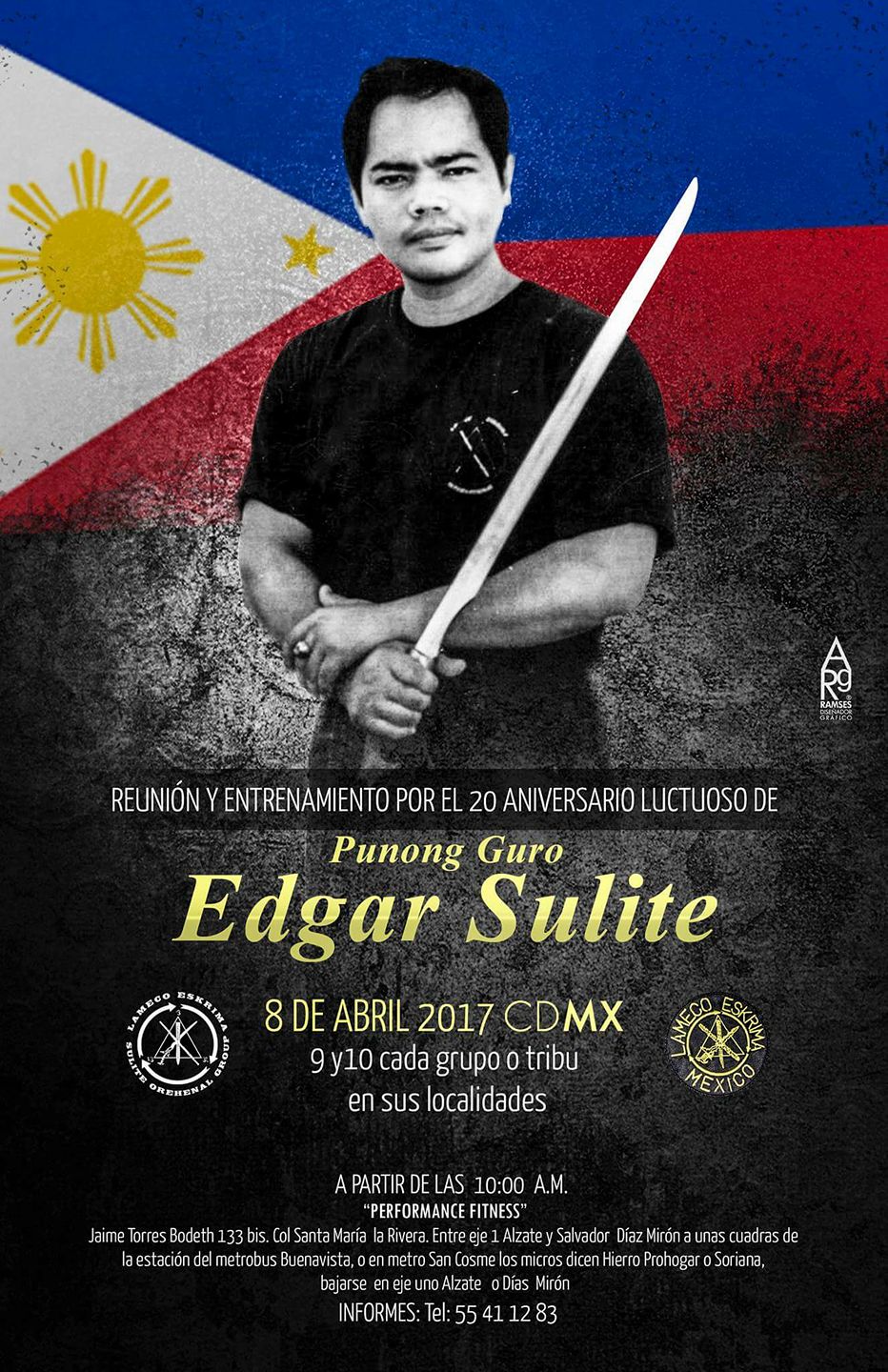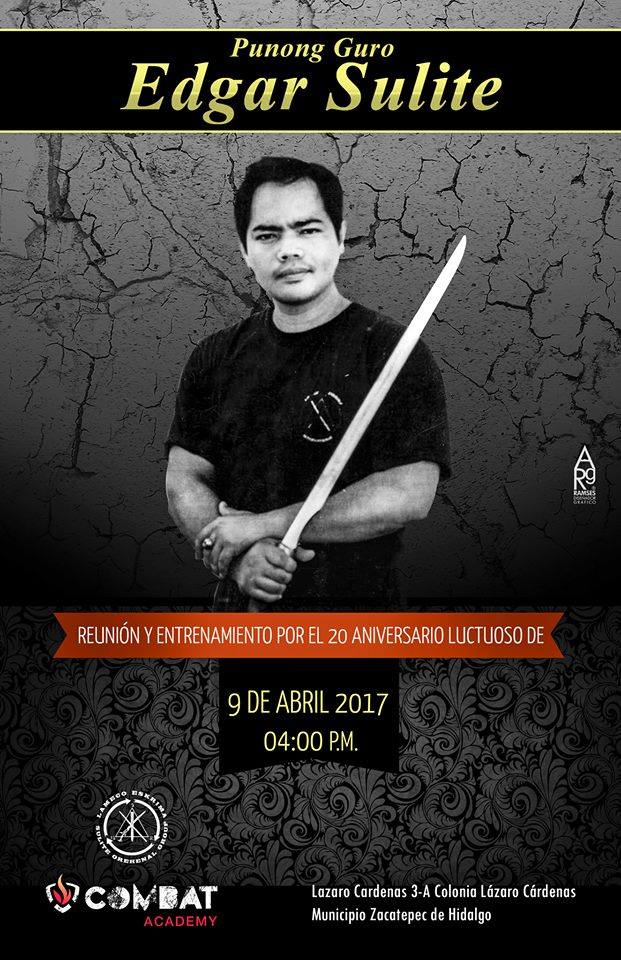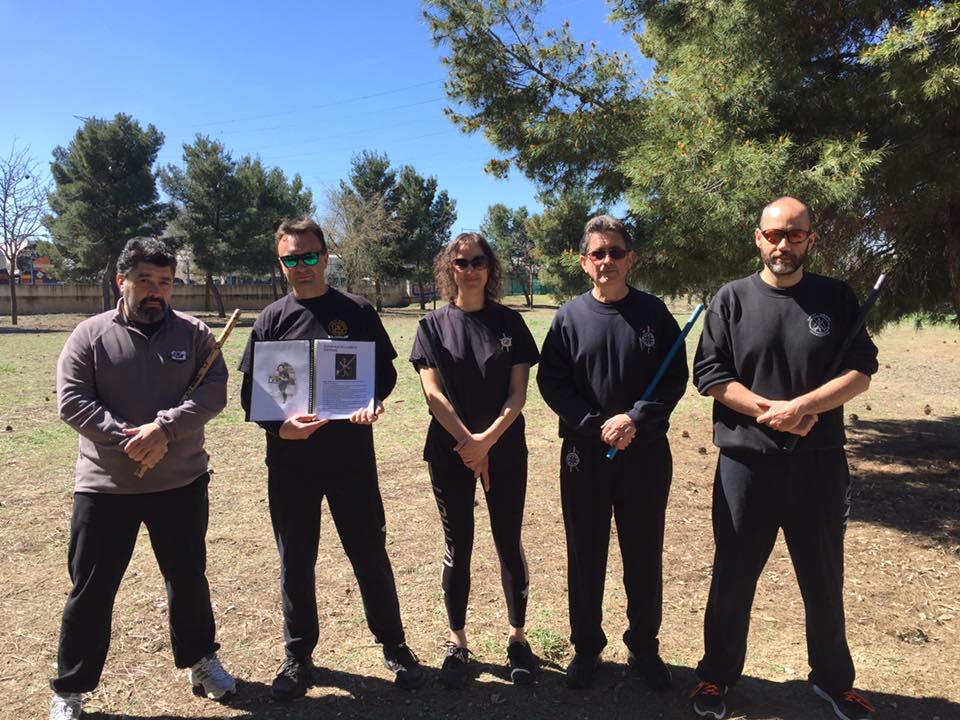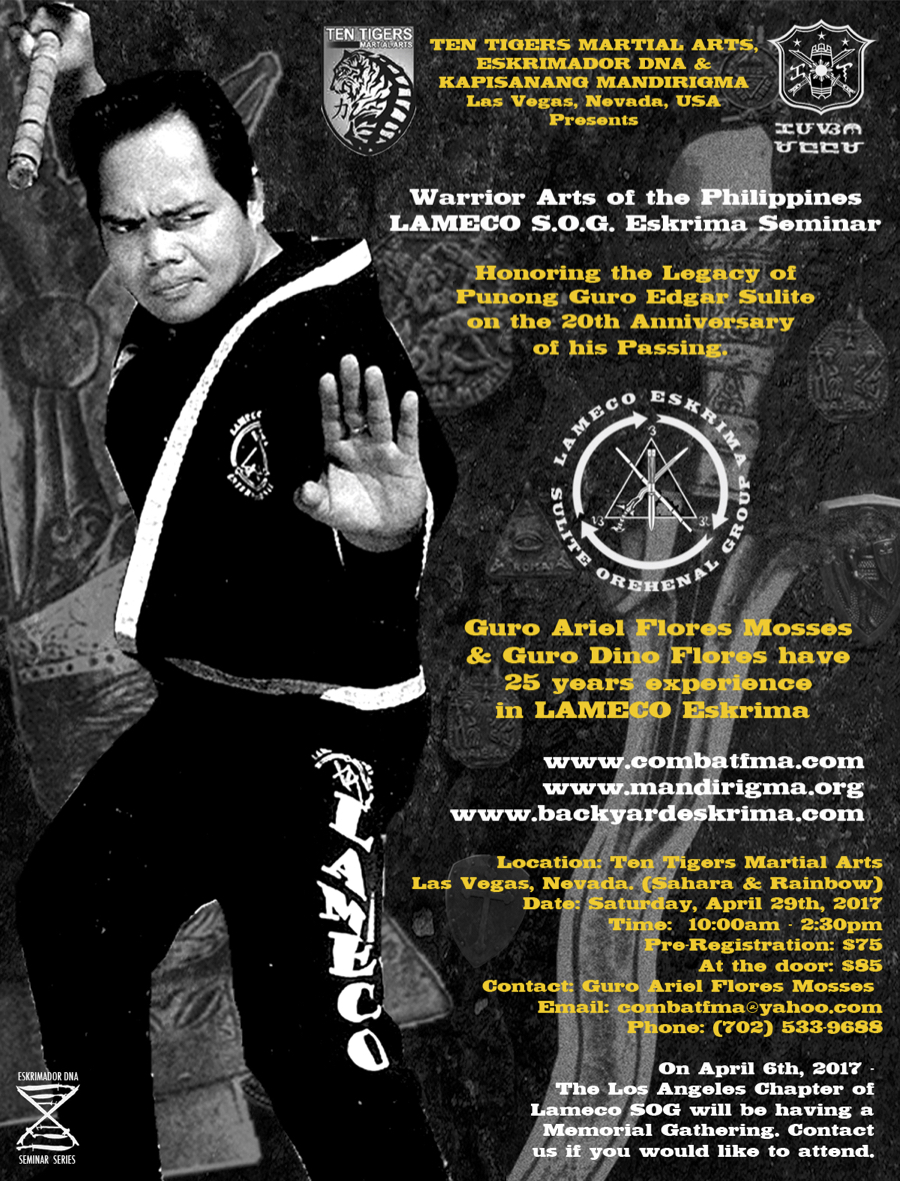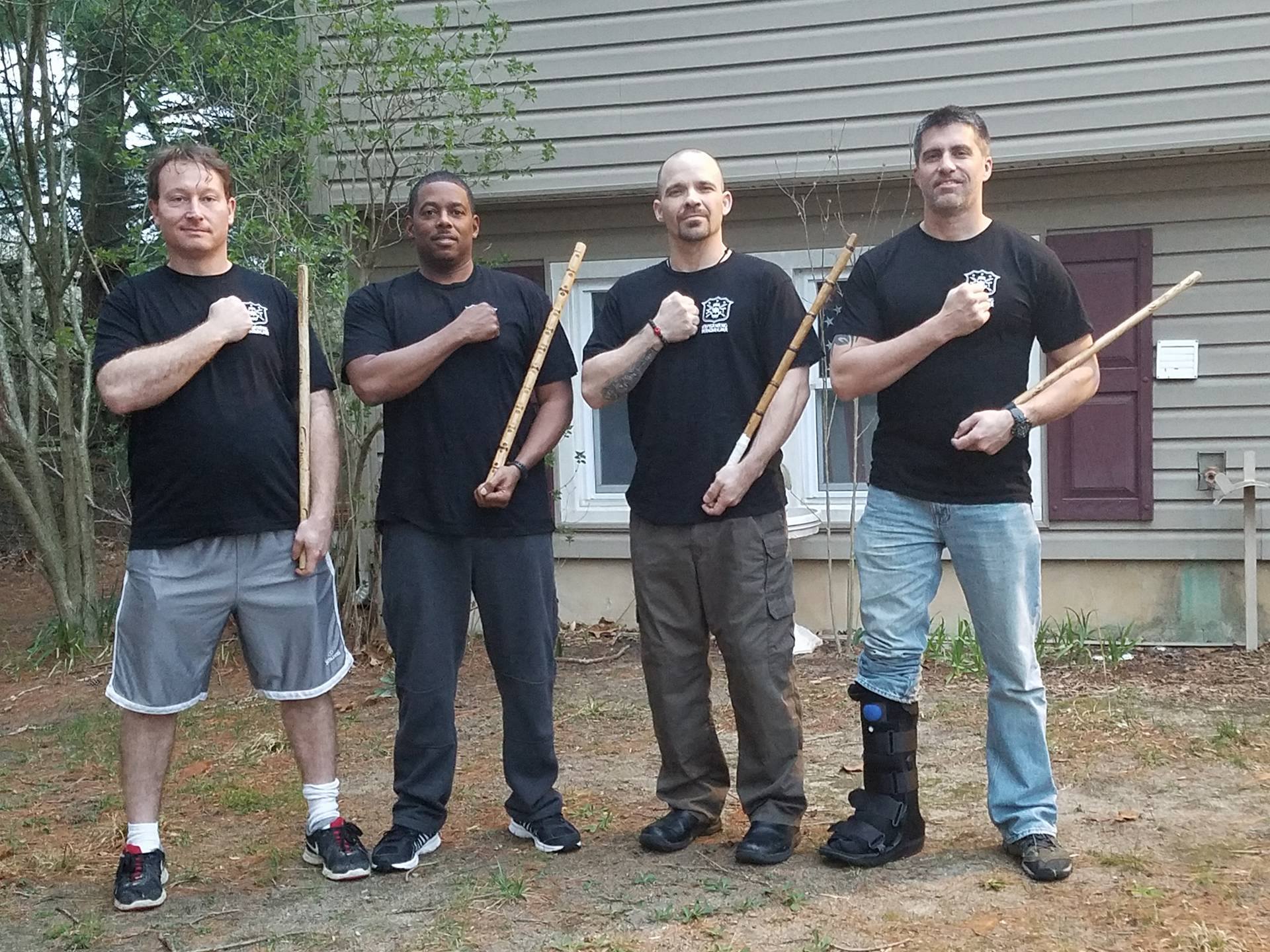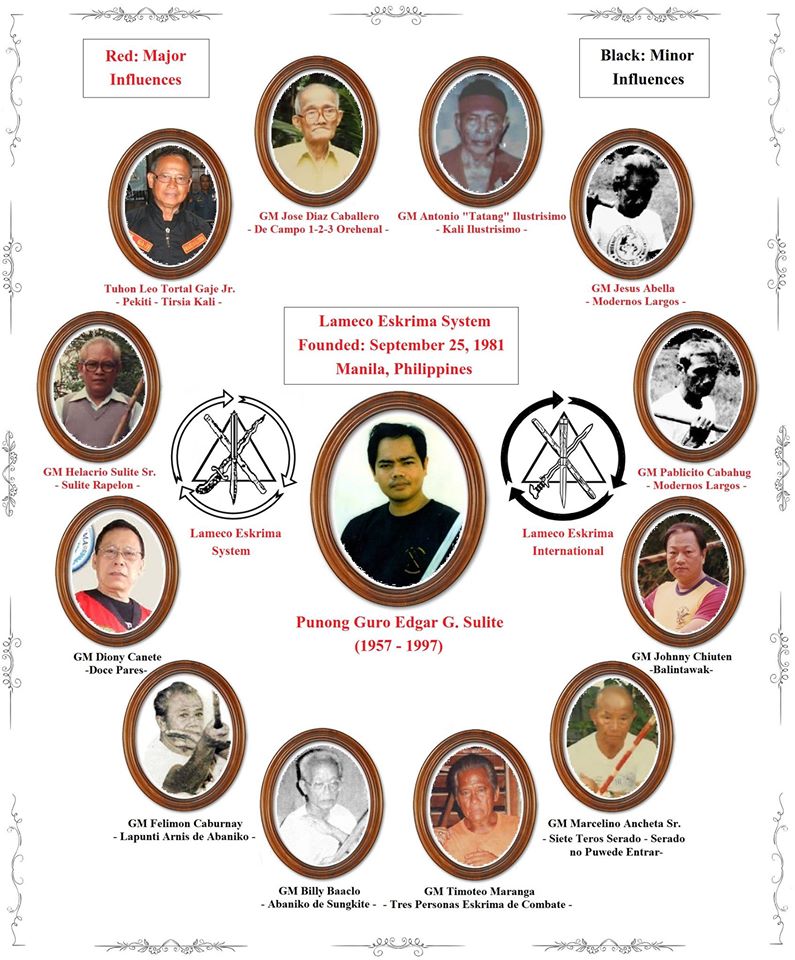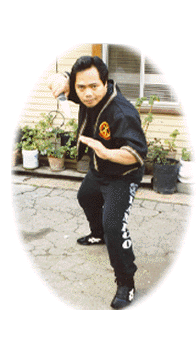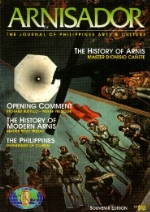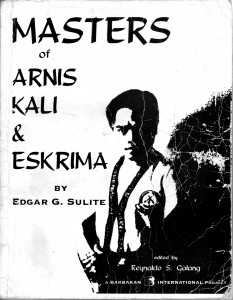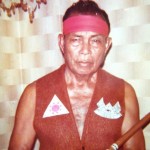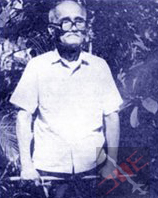Lameco Eskrima Practitioners Honor Punong Guro Edgar Sulite on his 20th Death Anniversary with training sessions and gatherings around the globe. 2017.
Punong Guro Edgar Sulite
September 25, 1957 – April 10, 1997
————
MADRID, SPAIN
Madrid, Spain Group headed by Guro Tim Fredianelli:
Honoring the memory of Punong Guro Edgar Sulite by training in Lameco Arnis in Madrid Spain. Our mode to all Lameco practitioners everywhere! Punong Guro Sulites 20th death anniversary. In Honor of Punong Guro Edgar Sulite we made a special training today. Our respects to our brothers from Lameco everywhere.
——–
MEXICO CITY, MEXICO
————-
ZACATEPEC DE HIDALGO, MEXICO
——
PINTO, SPAIN
Pinto Spain Group headed by Alfonso Lopez:
